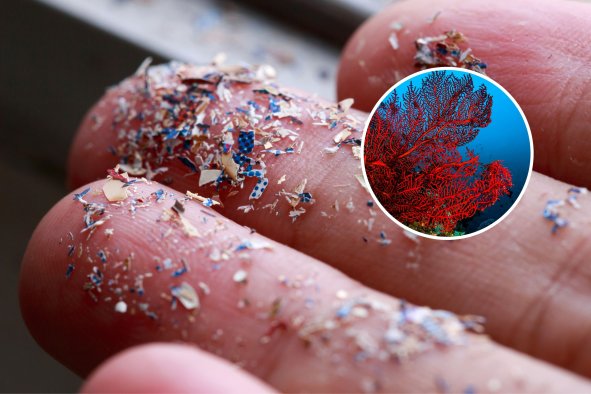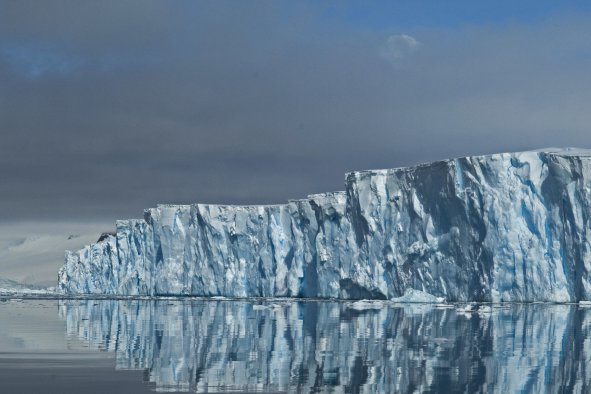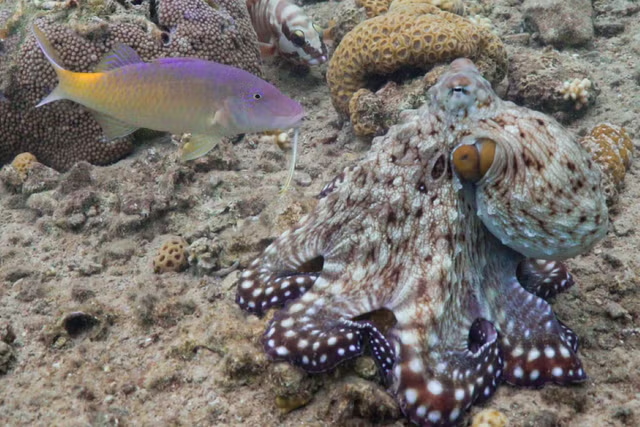One of Yellowstone National Park's most iconic attractions has been permanently changed by tourists. The Morning Glory thermal pool, a once-pristine, brilliant blue thermal feature in the park's Upper Geyser Basin has been transformed over the years as visitors have thrown things into its waters.
Historically, Morning Glory Pool dazzled early park visitors with its crystal-clear blue waters. Named after the vibrant Morning Glory flower, it was a key attraction in Yellowstone's early days, described by many as bottomless and stunningly beautiful.
"There are some lovely quotes about its beauty and stunning blue colors, and likening it to the Morning Glory flower," Yellowstone National Park historian Alicia Murphy told the Cowboy State Daily.
However, its mesmerizing appearance also attracted another kind of attention—visitors began throwing objects into it.
Coins, trash and random debris began accumulating in the pool. At the time, national parks were not widely recognized as conservation areas, and many tourists treated Morning Glory like a wishing well. The tradition of tossing coins into bodies of water, while often seen as harmless, had a damaging impact on the pool's ecosystem.
"I think many people like to throw things into pools. Wishing wells are a time-honored tradition. Flip a coin into a wishing well and make a wish. There is something about a pool of water that gives humans a weird instinct to throw things into it," Murphy said.
Former Yellowstone ranger Jeff Henry, who first visited the park as an infant and later spent decades working there, participated in a rare project to clean the Morning Glory Pool in 1991. Henry's team was tasked with painstakingly removing hundreds of foreign objects from its depths in an effort to restore its original beauty.
"We used a couple of fire trucks to pump down the pool's water level and shoot it into the Firehole River," he said. A worker, secured in a climbing harness, carefully retrieved items with a long-handled net—a meticulous process aimed at protecting both the fragile geothermal structure and the people involved.
"We found tons, probably thousands of coins," Henry said. "The main park road used to go right by Morning Glory, so that would account for some of the metal parts that looked like car parts chucked into the bottom of the pool.
"There were a lot of rocks that didn't belong there, and I think we found some hats that probably had blown off people's heads and landed in the pool. And they, wisely, didn't try to retrieve them."
Unfortunately, the damage to the Morning Glory Pool was already done. Over the years, the accumulated debris blocked its natural thermal flow, reducing the water temperature and allowing bacterial growth to flourish.
According to Mike Poland, scientist in charge of the Yellowstone Volcano Observatory, the temperature shift caused the pool's iconic blue color to fade.
"Hotter pools tend to be a brilliant blue, and cooler pools can be more colorful since bacteria can grow there. At Morning Glory, the temperature cooled because people throwing objects in caused the conduit to become partially blocked, and the temperature went down, allowing different types of bacteria to grow," Poland told the Cowboy State Daily.
Newsweek contacted Yellowstone's public affairs office and the volcano observatory via phone for comment on Monday.
Today, the Morning Glory Pool no longer resembles the clear, blue marvel it once was. Its deepest parts are green, transitioning to yellow around the edges—a stark contrast to the deep blue recorded in the 1880s.
Despite stricter conservation measures and increased public awareness, the effects of early vandalism still linger. Still, public behavior in the park has improved significantly.
"I don't see anywhere near as many coins in pools as I used to back in my early days in the park," Henry said. "The bottoms of the more accessible springs used to be paved with coins, but now it's pretty rare to see anything thrown into the pools.
"I think people are much more respectful than they were in my early days."
Do you have a tip on a science story that Newsweek should be covering? Do you have a question about Yellowstone? Let us know via science@newsweek.com.
Disclaimer: The copyright of this article belongs to the original author. Reposting this article is solely for the purpose of information dissemination and does not constitute any investment advice. If there is any infringement, please contact us immediately. We will make corrections or deletions as necessary. Thank you.



